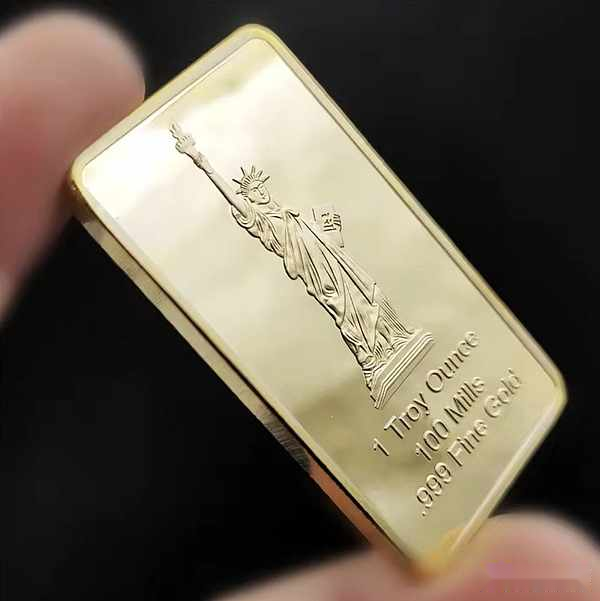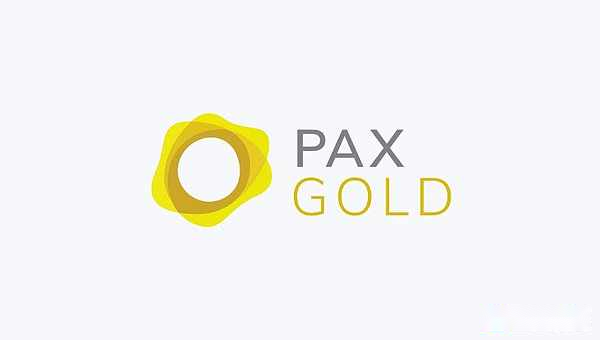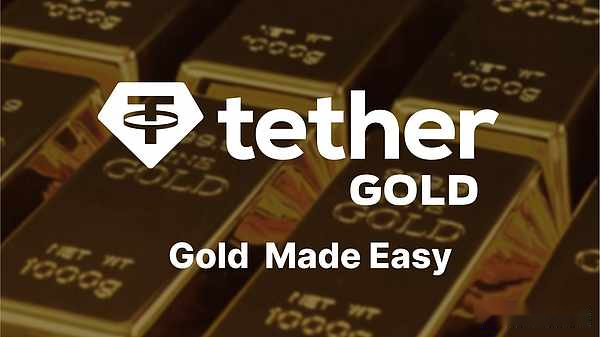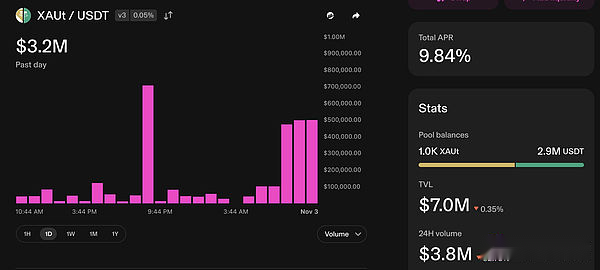
Author: ian.btc | 0xWorkhorse, Compiler: Shaw Bitcoin Vision
With price action in daily dinner table discussions, pessimistic timeline predictions from crypto pessimists, and legitimate discussions taking place among the likes of @notthreadguy, Peter Schiff, and CZ, tokenized gold is becoming an increasingly important consideration as we head into 2026—even for crypto forum starters.

Due to the growing interest in this, I get questions every day about how best to obtain on-chain gold, how to use it, and where to obtain it.
The two options that are getting the most attention right now are $PAXG (Pax Gold) and $XAUT (Tether Gold) – both are digital representations of physical gold bars issued and managed via blockchain technology.Each token represents one ounce of pure gold, giving investors access to gold’s value without having to face the complications of storage, transportation or custody.

Amid continued economic uncertainty and gold prices continuing to rise (at one point reaching over $4,000 an ounce), these assets are gaining momentum as reliable stores of value in cryptocurrency portfolios.In fact, in October alone, the total market value of the tokenized gold market exceeded $3 billion, with PAXG and XAUT accounting for approximately 89%.
In turn, gold continues to make up an ever-increasing portion of not just my portfolio, but the industry as a whole.So I’ve put together a thorough guide that explores what PAXG and XAUT are, how they work, their regulatory status and security profile, and how investors can use them – both as a long-term hedging tool and as an active tool in the decentralized finance (DeFi) space.
What are PAXG and XAUT?

Issued by Paxos Trust Company and launched in 2019, PAXG is one of the first fully regulated digital commodities.Each PAXG token corresponds to a specific, serially numbered London Good Delivery gold bar stored in a vault partnered with Brink’s.Gold is fully allocated and audited on a monthly basis to ensure one-to-one correspondence support.Absolutely reliable.
Because PAXG is an ERC-20 token, it can be easily integrated into the broader Ethereum ecosystem and can be traded or used in DeFi applications like other tokens.Its market capitalization is approximately US$1.22 billion to US$1.28 billion, with a circulating supply of approximately 307,000 to 310,000 coins, and ample liquidity on major exchanges including Binance, Coinbase, and Kraken.

XAUT, on the other hand, is issued by TG Commodities, SA de CV, an El Salvador-based entity owned by Tether.XAUT entered the market in 2020 and similarly represents ownership of one ounce of London Bullion Market Association (LBMA) standard gold stored in a Swiss vault.
Each token is verifiably backed by physical gold, and Tether provides daily snapshots of reserves to ensure transparency.The total supply of XAUT is about 246,500, but it fluctuates with demand—its market cap soared to about $1.5 billion in 2025, briefly surpassing PAXG.
While PAXG is designed for ease of use and compliance with regulatory requirements, XAUT is focused on institutional liquidity and integration with Tether’s broader stablecoin infrastructure.
how they work

While both tokens are backed by physical gold, their issuance processes differ in scale and accessibility.
For PAXG, the process begins with users exchanging USD or cryptocurrency for PAXG on the Paxos platform.Paxos then allocates an equal amount of gold from its gold reserves and issues tokens on Ethereum.
Each token can be traced back to a specific gold bar through Paxos’ verification tools.The tool links blockchain addresses to serial numbers, and you can track the movement of gold bars and tokens in real time on their website.The minimum purchase amount is just 0.01 ounces – about $40 at current prices – making it easy for almost any investor to participate.
XAUT takes a more unique approach.
Its gold is provided and secured by Tether’s Swiss partners, and issuance requires full KYC verification and a minimum purchase of 50 XAUT, equivalent to more than $200,000.
Each token is minted after gold is purchased and deposited into the vault, with buyers paying a 0.25% fee on purchase and redemption.Although the higher threshold limits the participation of retail investors, it is consistent with XAUT’s goal of focusing on providing privacy protection and liquidity for institutions and high-net-worth clients
The redemption process is also different.
PAXG holders can exchange their tokens for physical gold, unallocated gold (for institutional clients) or U.S. dollars at market prices.The redemption process is flexible and convenient, the threshold is low, and physical delivery can be arranged, but a certain fee is required.
In contrast, XAUT redemptions are only available for full gold bars – requiring a minimum deposit of around 430 XAUT to cover volatility – and must be delivered within Switzerland.Tokens will be destroyed upon redemption and compliance reviews may result in waiting periods before settlement.
Are they safe?
Security issues largely depend on the integrity of governance, custody and auditing.
What sets PAXG apart is its strong U.S. regulatory framework.Paxos Trust Company is regulated by the New York State Department of Financial Services (NYDFS), which requires rigorous monthly reserve reporting and independent third-party audits.
This structure places PAXG in one of the strongest compliance environments in the digital asset industry and significantly reduces counterparty risk.
The regulatory landscape for XAUT is fragmented.It is regulated by El Salvador’s National Commission for Digital Assets (CNAD), where Tether has set up some compliance operations and its vaults are in Switzerland.Audits of the token are conducted on a quarterly basis, and Tether has completed a SOC 2 Type 1 audit and plans to conduct a Type 2 audit to further strengthen regulatory safeguards.Additionally, the company hired Chainalysis for transaction monitoring.
While these measures are positive, some analysts have noted that Tether’s governance structure provides less direct regulatory scrutiny than Paxos’ fiduciary model, resulting in a slight but detectable increase in counterparty risk.
The ultimate security of both tokens depends on the vaults and custodians holding the gold.Risks that investors should be aware of include gold market price fluctuations, potential custody issues, blockchain vulnerabilities (such as smart contract vulnerabilities), and changes in regulatory policies for tokenized commodities.
In most independent evaluations, PAXG scores higher for transparency and governance, while XAUT is valued for its privacy and connection to the broader Tether liquidity network.
Both have proven stability and resilience during periods of market stress, including liquidity crunches and gold price volatility.At the end of the day, both are inherently equally safe.
Using PAXG and XAUT

Once you understand the mechanics, buying, holding and integrating tokenized gold into your portfolio becomes very simple.
Once you hold both tokens, you can integrate them into DeFi protocols.On platforms like Aave or Morpho, holders can lend PAXG or XAUT to earn an annualized yield, typically between 3% and 20%, or use them as collateral to borrow stablecoins without selling their gold exposure.
They can also provide liquidity for trading pairs like PAXG/USDC or XAUT/USDT on platforms like LFJ.gg on Avalanche and Uniswap on Ethereum, or use yield aggregators like Pendle for fixed income strategies.As always, returns depend on demand and incentives—high returns often come with higher smart contract risk.XAUT also benefits from integration with the TON blockchain, enabling low-fee staking.
Which one is better?

While both assets have the same underlying concept, their design philosophies are different.
PAXG’s strengths are its regulatory clarity, transparency and ease of access.It is designed for ordinary investors who want to invest in gold through a trustworthy, audited framework.
In contrast, XAUT focuses more on liquidity, privacy and institutional influence, and is closer to Tether’s stablecoin model.
In fact, PAXG is easier to buy, cheaper to transfer, and more convenient to redeem small amounts.XAUT requires a larger capital investment and has less redemption flexibility, but it benefits from its deep integration with the Tether ecosystem and the liquidity it brings.Both closely track spot gold prices, both are audited, and both are available in DeFi — but they target slightly different user groups.
While these differences are important, they are almost negligible for retail investors trading on-chain.Both have good liquidity and can be easily traded on decentralized exchanges (DEX), regardless of the amount.
Summary
PAXG and XAUT represent a new stage in the evolution of gold: a digital, portable and programmable form.They allow investors to hold gold as easily as a stablecoin, while maintaining a direct link to verifiable reserves of actual physical gold.
PAXG offers U.S. regulatory safeguards, low-barrier investment and transparency, making it suitable for mainstream users.XAUT provides an alternative for those who prioritize privacy, larger asset size, and interoperability within the Tether network.
Both tokens have established themselves as reliable, asset-backed representations of physical gold in a market that increasingly demands stability and liquidity.As tokenized commodities continue to evolve, assets like PAXG and XAUT could (and should) become important components of a diversified on-chain portfolio – they are truly the blockchain-native successors to the precious metals that have anchored value for thousands of years.
As for what I’m currently doing, I’m digging gold coins like crazy.My funds are heavily deployed on Avalanche and Ethereum pools, and I don’t expect that to change much anytime soon.
While gold is not (and should not be) central to my on-chain portfolio, it is now an automatically included part of my broader long-term strategy.






